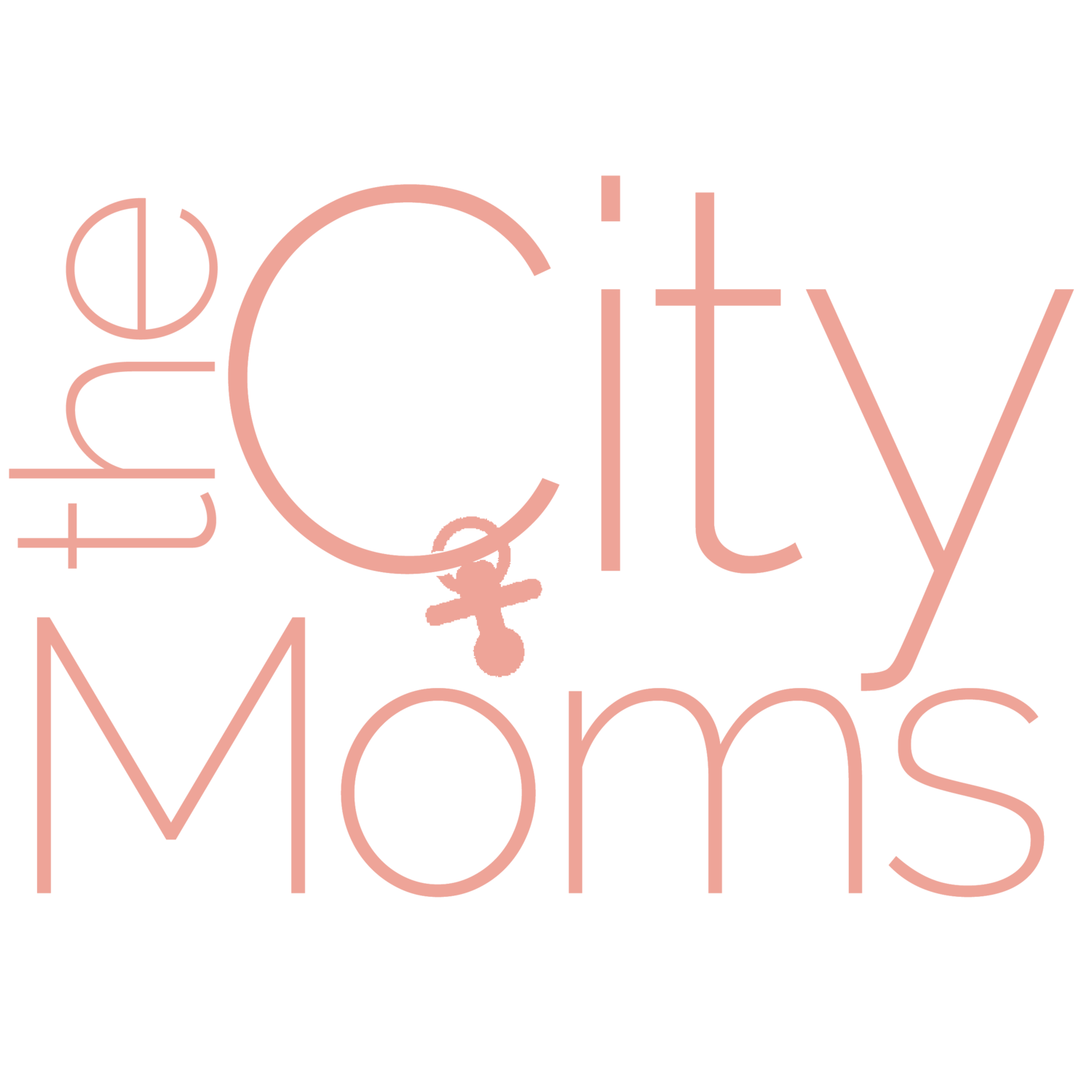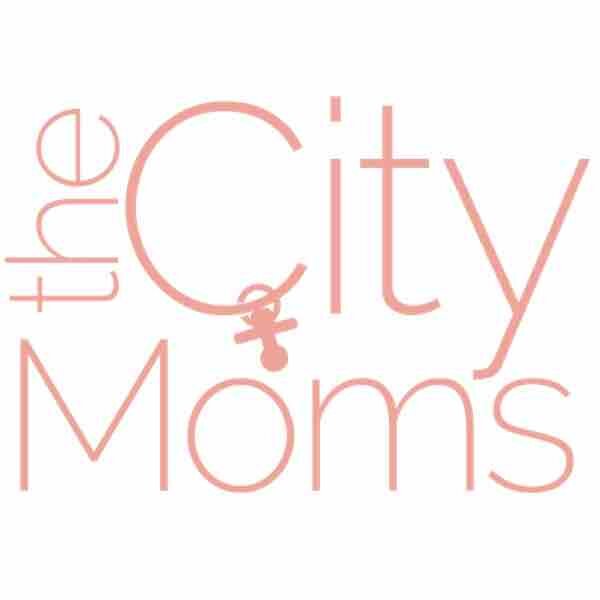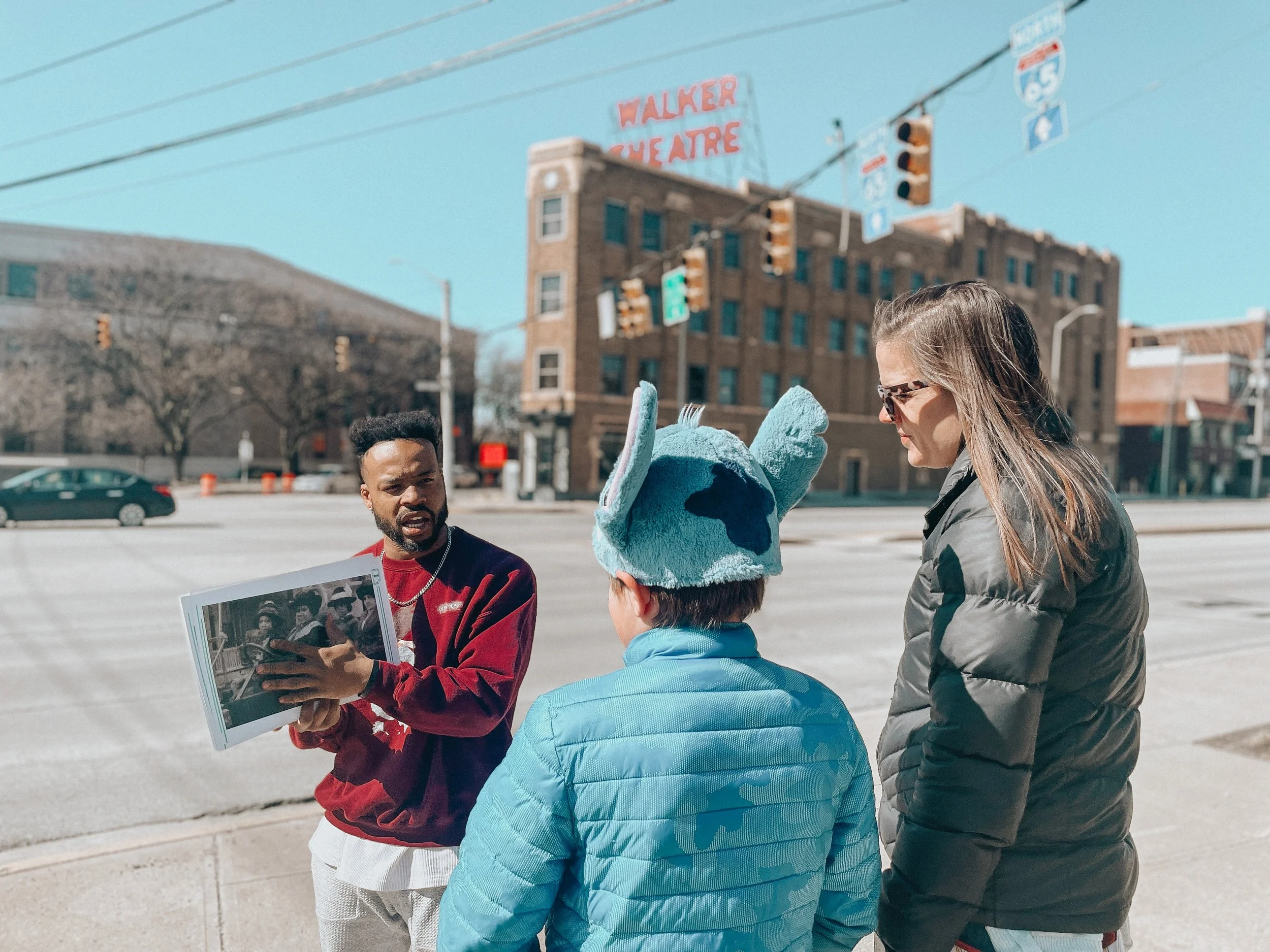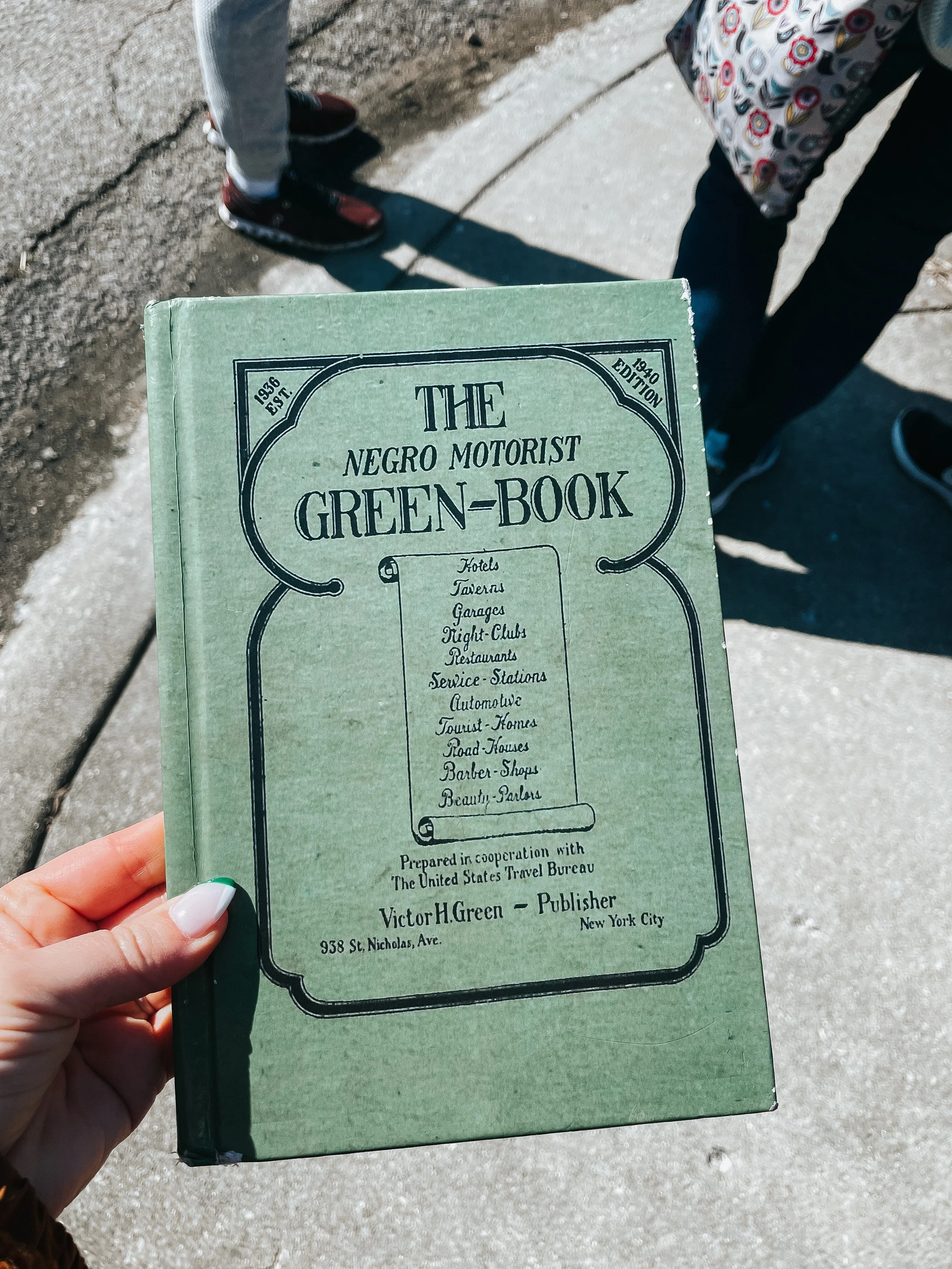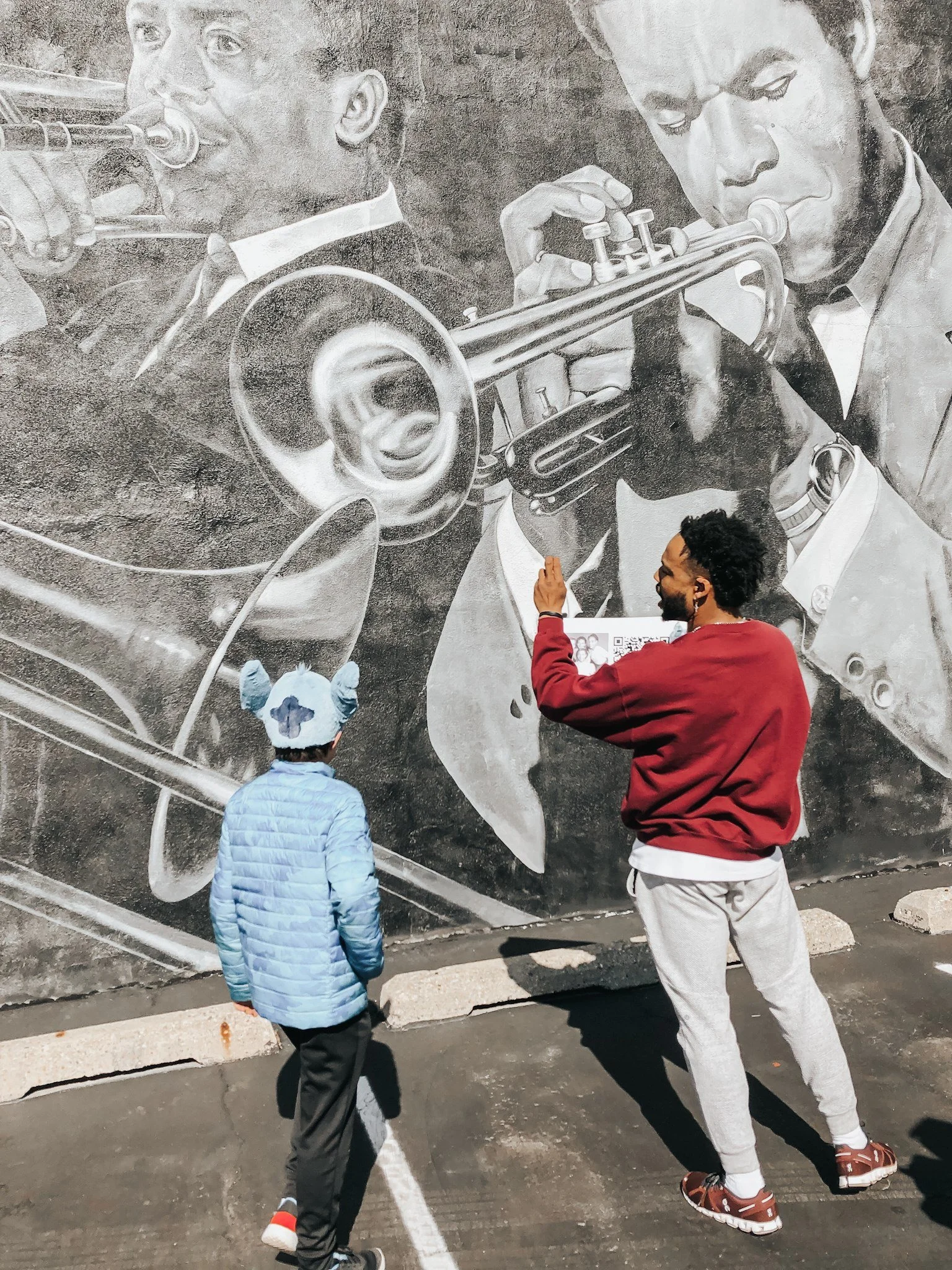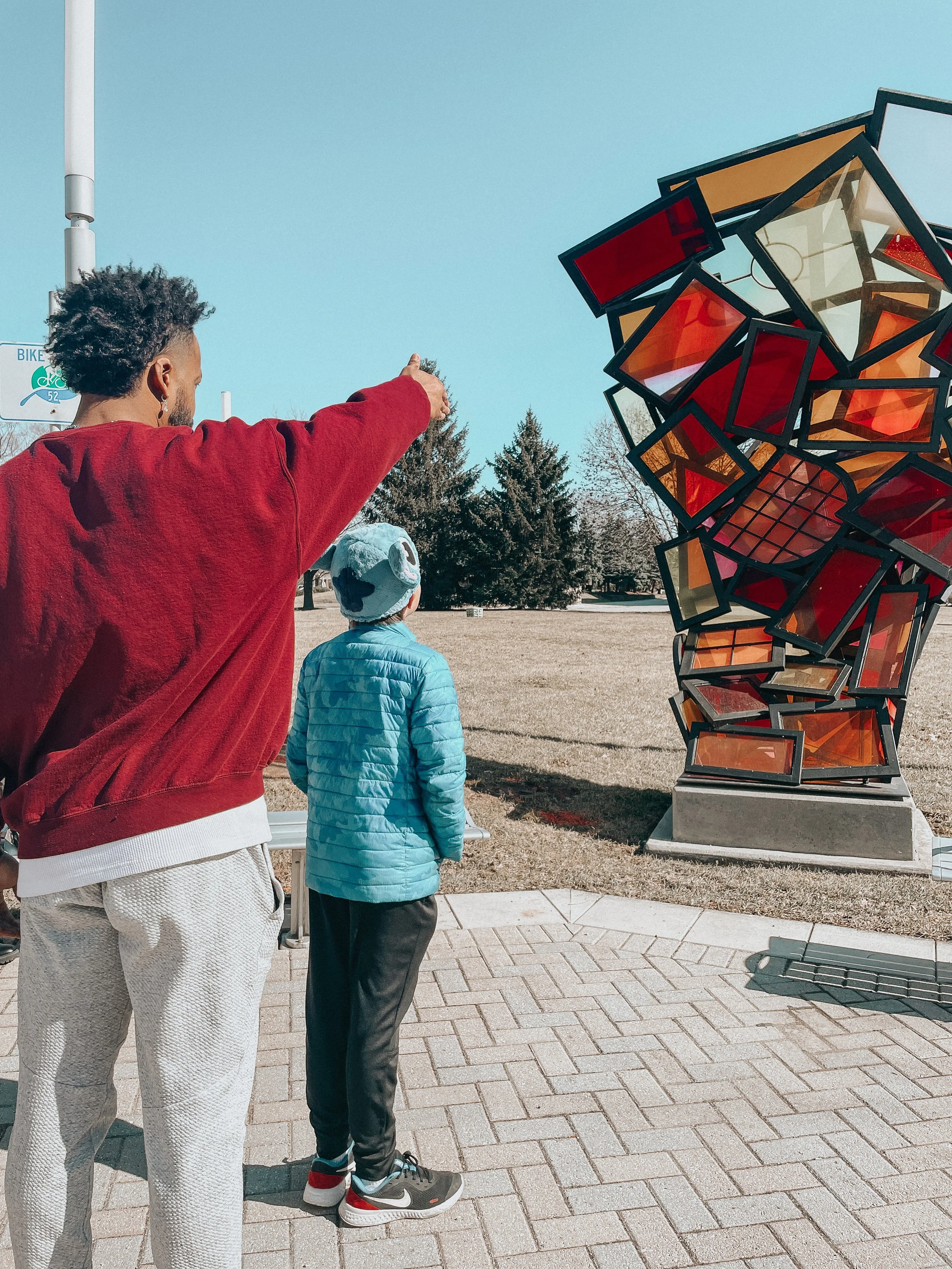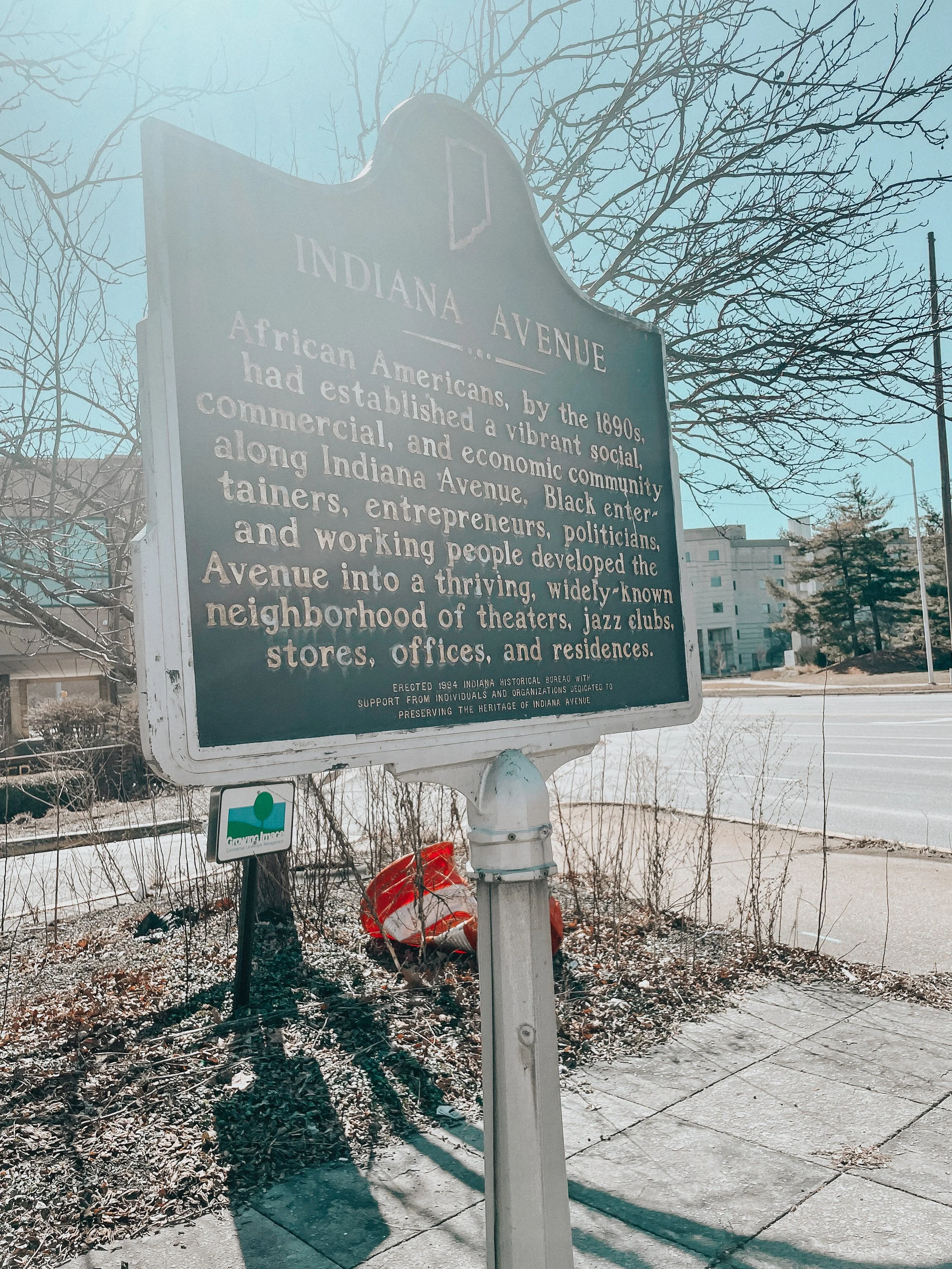Through his eyes: Sampson Levingston on walking and sharing Indianapolis’ rich Black history
Sampson Levingston loves history. And maps. He’s a student of where his feet are planted, preferring to examine his world by telling the stories of those who came before him. A historian at heart, Sampson brings local Black history to life, sharing this knowledge with others on Walk & Talk tours of Indianapolis’ iconic streets and neighborhoods.
theCityMoms joined Sampson for one of these tours in 2022, and we chatted with him beforehand to learn more about him, his favorite stories, and what keeps him energized about telling Indiana’s Black history. He’s not telling an easy history - but he’s telling a truthful one. He tells these stories with both great pride and great humility in a way that has you eager to dive deeper and learn more.
Through2Eyes creator and guide of Walk & Talk tours, Sampson Levingston.
Tell us about why you began Through2Eyes and how the Walk & Talk tours came to be.
The order of creation is Sampson, then Through2Eyes in 2017. It was a way for me to showcase how I was looking at the world. My football number was 2, all my teammates called me “Two.” Fresh out of college, I was still “Two” to a lot of my friends. Through2Eyes is kind of this triple entendre – looking through my eyes, looking through your eyes, and looking at the world through a different perspective. As I was doing this, I realized my favorite way to look and show people the world is through Indiana history. So after a year of writing about anything, I started writing only about Indiana history. I started one article with, “I love writing about this,” and after I typed that sentence, I was like, “That’s it!”
I talked all about Indiana history for a year, a year and a half, maybe 2. As people started responding to that, engaging with that, and with the protests going on, people were like, “Sampson, tell us more.” I thought, “I really want to organize this story in a cool way,” so I started the Walk & Talk after that. I’m happy I found those; anytime I try and do something different, I end up just doing Walk & Talks - I love it.
What do you think has made these tours so popular over the past two years?
I think it came from people’s desire to educate themselves and know more. They just didn’t know how to do that in a way that makes them feel comfortable and excited about it. Regardless of if you are a white person or a Black person, just as a loving and compassionate human being, you may not want to go to a museum to find a white-washed version of history or have an overly-traumatic experience. That’s a lot, you know? The tours are a fun and engaging way to celebrate and educate about history.
The Travelers' Green Book identified businesses that would accept Black American customers.
What is your favorite piece of Indiana’s Black history to share on your tours?
I like showing people The Green Book - it gives people a real physical depiction of what this area’s [Indiana Avenue] significance was - not just to Indianapolis but the whole country. This book has places listed all across the country where Black Americans could freely stop and travel - so when you see Indiana Avenue listed in there a dozen times, you know this is no longer just this guy telling me this; these aren’t just pictures; this is a publication that was given to people all across the country.
What is the most surprising question you have gotten on a tour?
I won’t say surprising, but I’ll say it reflects people’s knowledge about our history: I had an older lady ask me, “How did you get to the underground railroad?” As in physically, how did you get to it underground? And it was a question – ”When did they fill in this railroad?” At first, you want to laugh, but you can't – these people are so trusting - their ignorance of the history gives you an idea of how much wasn't told or explained [to them.] If you don't have someone to explain what that is or how it works, it kind of skips over you. That was the question that made me think – wow, people don’t really know – and also, “I am so cool that I am the one that gets to tell you this.”
Want to learn more about Through2Eyes? Follow them on the ‘gram!
Tell us about a tour that did not go as expected and what you learned from it.
My alma mater Indiana State brought its marketing team to do a Walk & Talk. There was a lady in a wheelchair – this was the first time I had someone with a physical disability; the elevator on the canal was broken, and we had to go to the historical society to get down to the canal.
We had a great tour, with the same values and experiences - but for every tour, I do now, I am always thinking about accessibility and about how mad I was that the elevator didn’t work and that the sidewalks were crooked, about things I never thought about before. I felt ashamed in a way, “Why didn’t I think this through?”
But also, I am happy this happened because we have had multiple people in wheelchairs since, so I am glad I tackled that. I asked her [the woman in the wheelchair] what she liked and what she didn’t like. It showed me a lot about our city’s planning – who can get around and who can’t.
CityMom Morgan said, “Meeting Sampson was like meeting up with that friend who is so excited to tell you about this new fun fact or random tidbit he just learned.”
Have you ever gotten into a conversation on a tour that led you to do something differently or add something to your tours? Tell us about it.
Yes – so we go to the Indiana Avenue Jazz mural, and there are eight [male] artists [depicted on the mural], and a little girl asks me, “Were there any girls on the Avenue?” Yes, of course, there were girls on the Avenue, but how would you know because you are looking at this picture of eight men?
The moment that happened, I knew I had to make a new set of signs [that depicted the women of the Avenue]. I made a point to show newspaper clippings of women who performed on the Avenue. There was also a guy on the mural whose sisters were pretty famous on the Avenue, so now I show a photo of his sisters and talk about them.
The kids ask questions that there are probably 100 adults who thought the same thing – but they are so blown away by what they are learning, they don’t want to ask questions. But the kids are looking at pictures of faces and asking, “Where are the girls” because they’re looking for themselves in history, and that’s what I like to do. They are looking for themselves in history and asking, “How do I fit into this story?”
The Jazz Masters mural on Indiana Avenue is one of Sampson’s signature talking points.
What are your dreams for Walk & Talk and Through2 Eyes?
I tell people I just want to walk and talk – which is simple, but I know how well people like it. I am just excited to see what neighborhoods I can reach – what people I can bring to Indiana Ave. My goal is always to get people to Indiana Avenue. I am excited to see what ways I can do that. How will I get people from Kokomo to Indianapolis? How will I get people from Richmond to Indiana Avenue? I am excited for the avenues that will lead people to the Avenue.
How do you decide your tour locations and routes? Do you have plans to add tour destinations or stops?
The Avenue - that route really was supposed to be straight down the Avenue to the capitol building to join a protest, but so many people were excited that I decided that we’ll just come back, do a figure eight and come right back where we started. I want to let people know that it’s Black history for sure – but I love Indiana history - I just talk about Black people more than they’re used to.
Irvington – there’s plenty of Black and women’s history; I wanted to do that to let people know that this isn’t just a Black history guy – this is a history guy.
Author’s Note: Sampson shared that he has done some commissioned tours, including Butler Tarkington, Newfields, and Martindale Brightwood. He also wants to create tours for Fountain Square, Mapleton Fall Creek, Conner Prairie, and Broad Ripple.
Mama, trust us, you’re going to want to schedule a tour ASAP. Here’s the link.
What drew you to making a hobby and a career out of history, specifically the history of Indiana?
A coach I had in college used to say, “Be where your feet are,” and that really stuck with me. I am here in Indiana, so the history I am looking for is always what is under my feet; it’s more about where I am. I know a lot about Terre Haute history [because I lived there for 4 years], and I walked onto campus, and I wondered about what this used to be…what was here before this building was here.
When I’m visiting California, I’m studying California's history. Truthfully, if I lived in Oklahoma, I’d be talking about Oklahoma's history. I feel most comfortable [talking about Indiana] because I have always lived here.
“So many communities need this – they need storytellers who really are passionate and who are not boring or lame – so they can reach people.”
When you are taking time to recharge, where might we find you spending time in Indianapolis?
My favorite thing to do is to chase the sunrise or sunset on a day I’m not doing much. If I see the sun start to set, I’ll just go west, whether it’s on 38th Street, it doesn’t matter; I’ll drive, and I try to extend my day. I’ll go to some random town, stop and eat, and then go back. I like chasing the sun…and looking for birds.
With just one kiddo on board, Sampson knew just how to draw him in by asking him to read historic signs or make observations, like at the Looking Through Windows art installation.
What is your favorite part about having children on your tours?
Talking directly to kids – that’s what I like. I don’t just talk, and the kids are there – I get down [at their level]. I’m talking to the kids. I don’t want them just to be on this tour with you [the adult]. I want them to play games. For example, sometimes when we’re crossing the street, I’ll jump from white line to white line [for fun]- making the kids as much part of the tour as I can. I hope they are taking away, “Whatever you like, just like it.” Whatever I liked, my mom liked. Whatever I wanted to do, she was all about. Whatever you are excited about, be excited about it. Realize what makes you excited, and don’t be afraid to talk about that.
What advice does present-day Sampson have for adolescent Sampson about pursuing your passions?
Don't stop – that’s it. I literally talk about the same things all the time, every day; I just don't stop –whatever it is that you like. Do you like to play the guitar? Play the guitar every day; let people know that you play the guitar. Have confidence in your passions.
As far as sports: take advantage of some of the lessons being taught to you by playing sports and other interactions. Whether that is your middle school baseball coach or your college football coach, those lessons about team building and common goals are invaluable.
What do you want people outside of Indianapolis to know about this city?
I want them to know that we have a rich beautiful Black history that has not been showcased in the ways that it should. So with them knowing that about Indianapolis, I want them to take that back to wherever they are from and to think about: “What is not showcased here? Who was the mayor's wife who did more work than the mayor? Who was the Native American tribe that was here before?” This stuff is accessible. The resources are all out there. It’s just the excitement and engagement in what you are doing. I want people to be excited about the history that’s there. They probably won’t embark on some amazing history discovery, but what they may find is that their town has more diversity than they thought at first.
